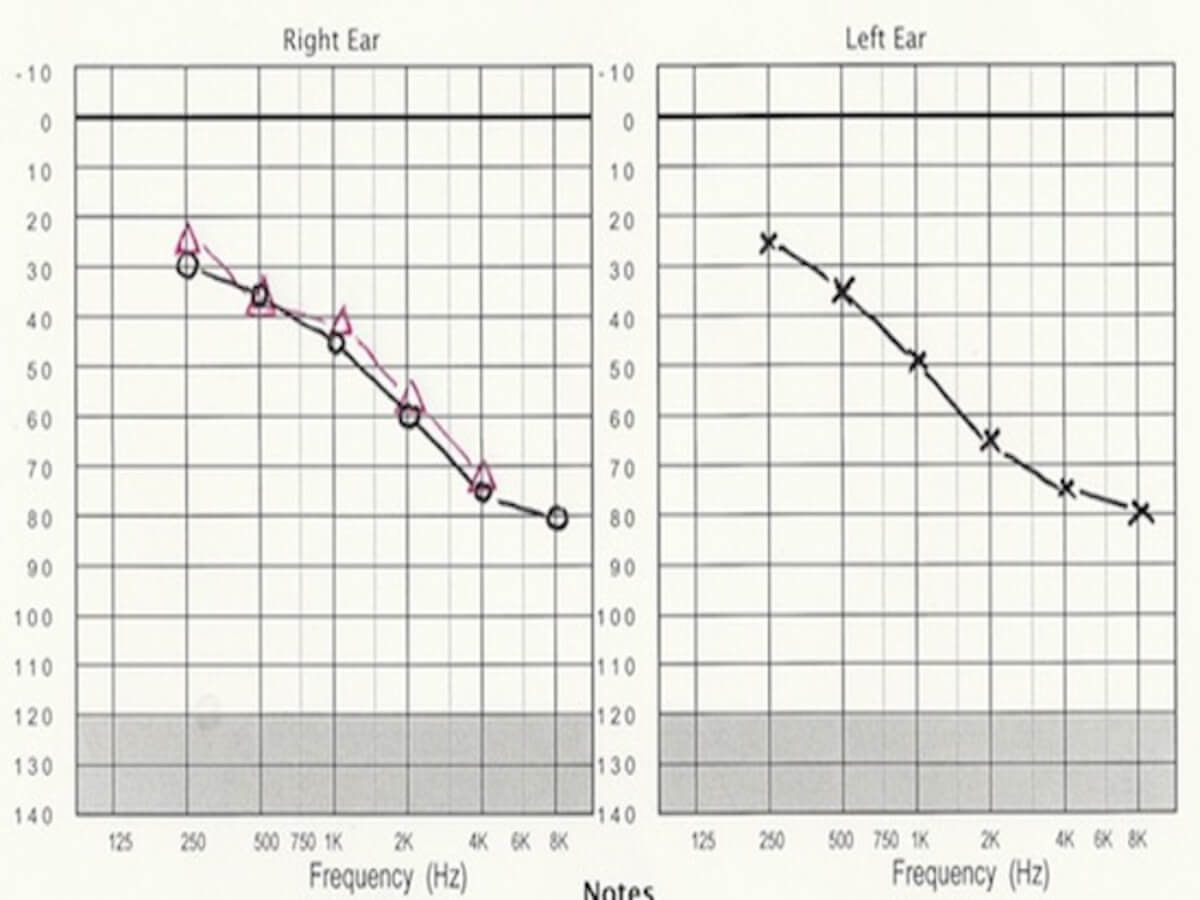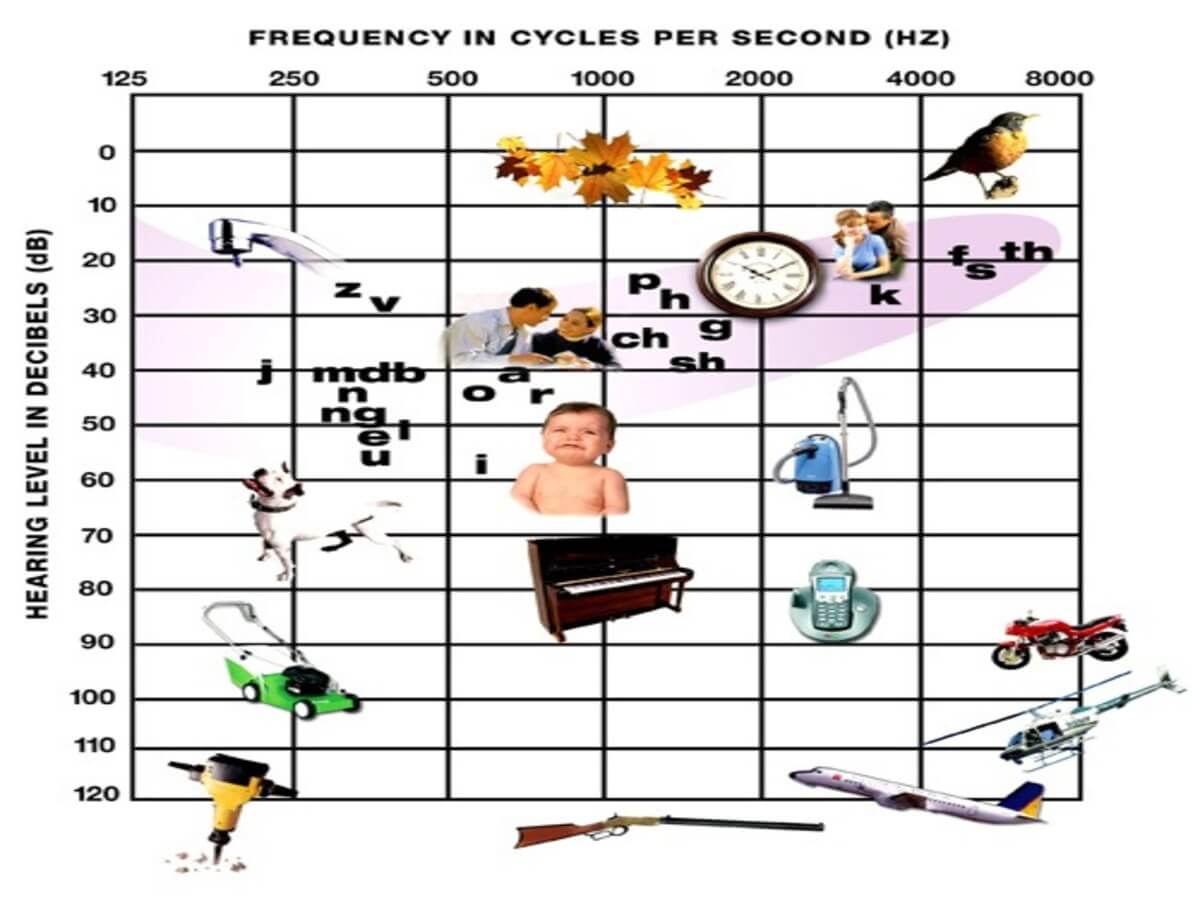Straight to the matter, there are three basic categories of hearing loss: mixed hearing loss, conductive hearing loss, and sensorineural hearing loss. Nine out of ten people with hearing loss have sensorineural hearing loss, which is the more prevalent type.
Damage to inner ear tissues or the auditory nerve results in sensorineural hearing loss (SNHL). More than 90% of adult hearing loss is brought on by it. Loud noise exposure, genetics, or the normal ageing process are common causes of SNHL.
Your cochlea, an organ that spirals inside your inner ear, is home to microscopic hairs called stereocilia. Your auditory nerve sends neural messages to your brain through these hairs, transforming sound wave vibrations into neural signals. These hairs can be harmed by exposure to sounds louder than 85 decibels (dB).
However, it’s possible that you won’t notice the hearing loss until between 30 and 50% of these hairs are harmed. From inside a car, 85 dB is similar to loud traffic noise.
Depending on the extent of the damage, SNHL can range from minor hearing loss to total loss of hearing.
- Mild hearing loss, an audible loss of 26 to 40 dB.
- Moderate hearing loss, a hearing loss of between 41 and 55 dB.
- Severe hearing loss is a hearing loss that is louder than 71 dB.
Although SNHL is not a life-threatening disorder, it might affect your ability to speak if it is not treated appropriately. To learn what causes SNHL, how to prevent it, and your treatment choices if you already have it, continue reading.
What Are the Causes of SNHL?
Damage to microscopic hair cells in the cochlea and auditory nerve causes SNHL. The cochlea receives sound energy, but harmed hair cells cannot translate sound waves into neural impulses that can travel along the auditory nerve to the brain. Anomalies of the auditory nerve can also lead to SNHL. Additional factors could be:
- Sudden Hearing Loss: An ENT (ear, nose, and throat) specialist or an otolaryngologist should be consulted if you experience sudden sensorineural hearing loss as this condition may be brought on by a virus.
- Ageing: Growing older gradual, irreversible SNHL (most common)
- Acoustic Trauma: Acoustic trauma that leads to noise induced hearing loss like SNHL is caused by exposure to loud noises, such as those made by machinery, explosions, or gunfire that are close to the ear; this can be avoided by wearing protective gear.
- Head Trauma or Abrupt changes in air pressure: The compartment that houses the inner ear fluid may rupture due to head trauma or abrupt changes in air pressure.
- Autoimmune inner ear disease: The body’s immune system assaults the inner ear in autoimmune internal ear disease, which results in progressive hearing loss in both ears.
- Ménière’s disease: Ménière’s disease is an illness that causes ringing in the ears, fluctuating hearing loss, and vertigo (called tinnitus)
- Central nervous disease: Damage to the central nervous system brought on by an illness like multiple sclerosis
- Cochlear otosclerosis: Cochlear otosclerosis causes improper inner ear bone growth
- Congenital inner ear malformation: Genetic or environmental defects that induce congenital internal ear deformity (prevalent cause in children)
- Benign tumour: Vestibular schwannoma, a benign tumour on the nearby balancing nerve that compresses the hearing nerve that travels from the inner ear to the brain and results in SNHL
Sensorineural Hearing Loss Audiogram

Image via earsandhearinguk.com
What a person can hear through air conduction is shown by the black circles in the right ear and the black crosses in the left ear.
In other words, this is their usual level of hearing.
The sound travels through the ear canal, ear drum, hearing bones, inner ear, and nerve ending before reaching the brain. The hearing route is represented by the black circles and crosses, which do not help pinpoint the location of the hearing loss.
The red triangles in the audiogram mentioned above indicate that the nerve function isn’t functioning correctly (above the 25dB level would be expected).
The black line is the same as the red line indicating that there is no further hearing loss coming from the outer or middle ear; therefore, all hearing loss is caused by a sensorineural (inner ear) issue.
The level of commonplace sounds is displayed in the audiogram below. Any noises above the line on this audiogram will be inaudible if you plot your hearing level there.

Image via earsandhearinguk.com
The SPEECH BANANA is the purple region. It indicates that some parts of speech are quieter than others and represents the loudness of typical conversational discourse.
Why is it so hard to understand speech with this hearing loss?
In addition to having a higher pitch than vowels, some consonants are also uttered at a quieter loudness. If someone speaks to an older person in a busy environment, they will no longer be able to hear the high tones, which they can only make out in a calm environment. In other words, kids won’t be able to distinguish between consonants like “fat” and “sat,” “ship” and “chip,” “kiss”, and “this.” Even though they can’t understand speech, they will know someone is speaking. The issue might be resolved by using a hearing aid to increase the amplitude of the frequencies they cannot hear.
What Are the Symptoms of SNHL?
Depending on the aetiology, SNHL may affect one or both ears. Without a hearing test, your symptoms might not be apparent if your SNHL develops gradually. The symptoms of abrupt SNHL will appear over a few days. Many people wake up for the first time noticing sudden SNHL.
Following a sensorineural hearing loss,
- Trouble hearing noises in noisy environments, especially trouble understanding female and child voices
- Unsteadiness or balance issues
- Difficulty hearing loud noises
- You have the impression that noises and conversations are muffled and that you can hear but not understand them.
- Tinnitus (ringing in your ears)
Types of Sensorineural Hearing Loss
Sensorineural hearing loss can damage one or both ears, depending on the source.
- Bilateral sensorineural hearing loss. SNHL in both ears can be caused by genetics, loud noise exposure, and conditions like measles.
- Unilateral sensorineural hearing loss. If SNHL is brought on by a tumour, Meniere’s disease, or a sudden loud noise in one ear, it may solely damage that ear.
- In asymmetrical sensorineural hearing loss, when there is hearing loss on both sides, but one side is worse than the other, this condition is known as asymmetrical SNHL.
What Treatments Are Available for SNHL?
Visit our ENT doctor, who can provide the proper diagnosis if you’re experiencing hearing loss. This is significant since the source of hearing loss determines how to treat it. Our doctors in JGlasses will be able to discuss all available treatments with you after a diagnosis has been made. An audiogram or hearing test conducted by our audiologist as part of the evaluation will be crucial in determining the degree of your hearing loss and whether it is conductive, sensorineural, or both.
Our ENT expert may suggest particular treatment options based on your hearing test findings or other prospective tests like a CT or MRI imaging scan. Options for treatment include:
- Ongoing monitoring and frequent hearing tests
- Medical treatment options include diuretics for Ménière’s illness and corticosteroids (oral or administered by injection through the eardrum) to minimise swelling and inflammation in the cochlear hair cells following exposure to loud noises.
- A diet low in sodium
- Assessment and hearing aid or other assistive listening device fitting
- Seating preference in class for students
- Surgery to treat the underlying issue causing the hearing loss
- The procedure to implant a hearing aid
Various types of hearing aids like conventional hearing aids or implanted hearing devices can be used to treat SNHL. Again, depending on your hearing test results and lifestyle, our ENT expert and audiologist can help you choose which device might best fit you.
At JGlasses & Hearing, as an expert on hearing aids in Singapore, we know there is no “one-size-fits-all” option when choosing the proper kind of hearing aid for you. Therefore, contact us today to get a free hearing evaluation with one of our specialists.

